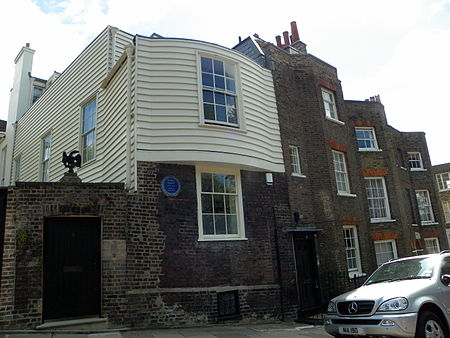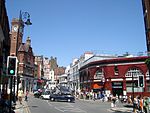Romney's House

Romney's House at 5 Holly Bush Hill, Hampstead, Camden, London was the home of the artist George Romney and then of the architect Clough Williams-Ellis. It is a Grade I listed building. The house was designed for Romney by Samuel Bunce in 1797–8, as a studio and gallery. It was constructed on the site of the stables of an eighteenth century mansion, No.6 The Mount. Sold by Romney some years before his death, it was then used as The Hampstead Assembly Rooms. In 1929–30, the house was substantially remodelled by Clough Williams-Ellis as his own home and as the office for his practice. The house is now subdivided, part being run as a public house, and part in use as a private residence.
Excerpt from the Wikipedia article Romney's House (License: CC BY-SA 3.0, Authors, Images).Romney's House
Holly Bush Hill, London West Hampstead (London Borough of Camden)
Geographical coordinates (GPS) Address External links Nearby Places Show on map
Geographical coordinates (GPS)
| Latitude | Longitude |
|---|---|
| N 51.557941666667 ° | E -0.17962222222222 ° |
Address
Holly Bush Hill 5
NW3 6SH London, West Hampstead (London Borough of Camden)
England, United Kingdom
Open on Google Maps











